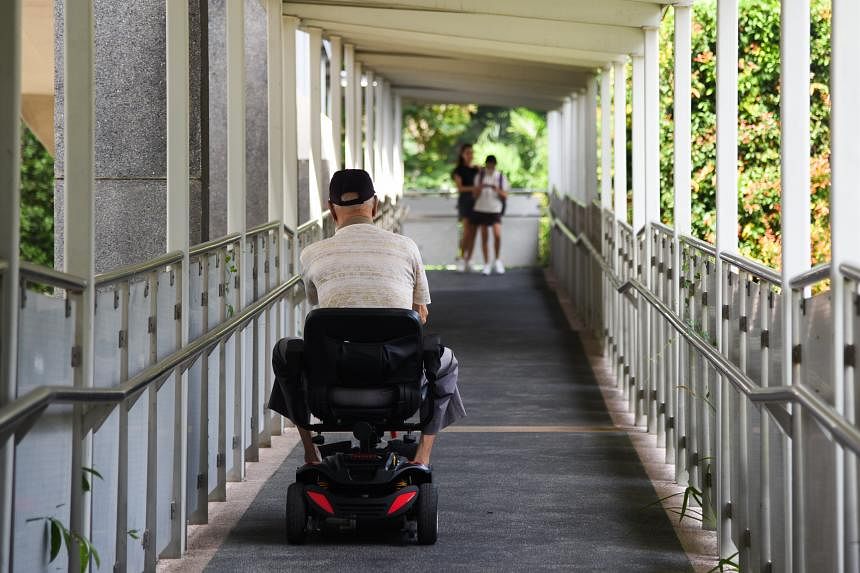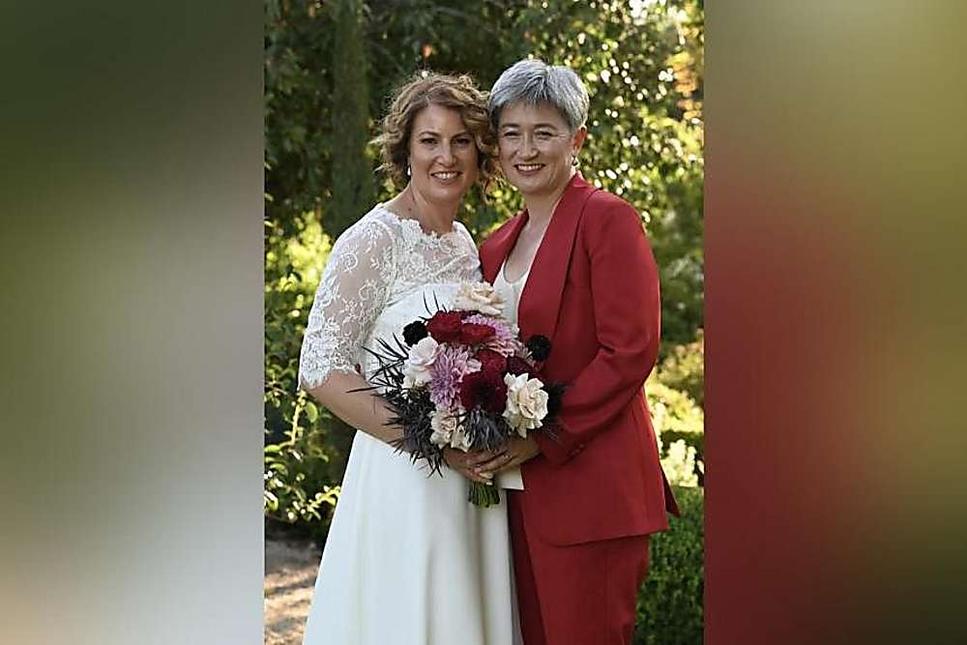How to keep paths safe for all as personal mobility aids become more common
Consider screening and theory lessons for PMA users while making urban spaces more inclusive.
Kelvin Tan

We are all too familiar with the many instances of collisions involving personal mobility aids (PMA), some with tragic consequences.
Putting aside individual responsibility, a crucial question emerges: Is super-ageing Singapore truly prepared to become PMA-friendly? For this to happen, PMA users will also have to be more responsible.
During the parliamentary debates on March 5, Senior Parliamentary Secretary for Transport Baey Yam Keng outlined several regulatory adjustments for PMAs that are expected to take effect around 2025. These include a reduction in the speed limit from 10kmh to 6kmh, updates to dimension restrictions, and a stipulation that only individuals with medical needs can use PMAs.
While these changes reflect a broader societal concern for safety in urban mobility, they alone are insufficient.
Becoming truly PMA-friendly requires more than just regulatory adjustments; it demands a fundamental shift in our treatment of personal mobility and accessibility.
Why PMAs are popular
In recent years, there has been a noticeable uptick in the popularity of PMAs, with providers witnessing an increase in sales. This surge is not surprising. It mirrors the growing necessity for mobility assistance among seniors.
These devices, ranging from wheelchairs to mobility scooters, play a vital role in overcoming physical barriers and enabling individuals to navigate their surroundings with greater ease.
To seniors, PMAs, mobility scooters in particular, represent more than just convenience. They embody dignity and independence – the freedom to move at their own pace, reducing reliance on public transportation for short distances.
In Singapore, seniors with walking disabilities face limited transportation options. Rideshare services and taxis can be costly, and not all vehicles can accommodate wheelchairs.
Although care institutions such as daycare or rehabilitation centres have special vans designed to accommodate wheelchairs, these provisions come at considerable costs as well.
Consequently, mobility scooters have become an attractive option, offering affordability and greater mobility, especially for seniors living independently.
Some mobility scooters even come with GPS-tracking technology, further enhancing their appeal and providing peace of mind to caregivers.
To defray costs, the Agency for Integrated Care has a Seniors’ Mobility and Enabling Fund which extends subsidies to Singaporean seniors who require mobility and assistive devices.
Such subsidies and support measures, while commendable, also fuel the already-burgeoning demand for PMAs and especially mobility scooters. Without proper regulation, the increase in PMAs will strain Singapore’s already-crowded and space-constrained urban infrastructure.
Ensuring safety
Stringent measures, like those announced by the Transport Ministry, must be implemented to alleviate the strain on infrastructure and maintain public safety. These measures ensure that users of PMAs are those who need them the most and that their usage does not jeopardise others’ safety.
The authorities may consider additional measures like conducting screenings and theory lessons for users to enhance safety and awareness.
Screening protocols would mitigate safety risks stemming from age-related hearing, vision or cognitive impairments, while theory lessons would ensure users understand the functionalities of their devices and existing regulations.
It is worth noting that there is already a mandatory theory test for users of e-scooters and power-assisted bicycles.
It is also preferable for users to adhere to guidelines through self-regulation rather than relying solely on enforcement by police or traffic wardens.
Thus, public education plays a crucial role in fostering a culture of awareness and accountability among PMA users. While PMA providers can contribute by educating buyers on proper usage, inculcating proper etiquette requires a broader, concerted effort in public communications.
This effort must be complemented by infrastructural enhancements. In areas with a higher density of seniors, Silver Zones have been implemented, introducing features to make roads safer for seniors. However, it remains the responsibility of users to take preventive measures, particularly on narrow, shared public paths.
Features such as improvised horns to alert pedestrians and prevent collisions are beneficial, but fostering positive and safe attitudes towards PMAs is paramount.
Furthermore, urban spaces must be designed to be more inclusive. For instance, our Park Connector Network, which runs through many parts of Singapore, is designed for multiple users of various equipment and devices to share paths. Increasing the number of shared paths can alleviate tensions among pedestrians, cyclists, wheelchair users, those pushing prams and pet lovers, enabling all users to effectively share these spaces.
At present, public spaces such as hawker centres, shopping precincts and parks are not always designed with PMAs in mind. This must change to ensure inclusivity and accessibility for all.
What other ageing societies are doing
The increasing adoption of PMAs to address mobility challenges is not unique to Singapore.
In other ageing societies like Japan, Hong Kong and Taiwan, PMAs have similarly gained popularity, each with unique regulations.
Hong Kong embraces Electric Mobility Devices for short-distance commutes on cycle tracks. They are prohibited from footpaths and carriageways.
In Taiwan, mobility scooters and powered wheelchairs must not exceed a speed of 6kmh while on sidewalks, with a fine of NT$300 (S$12.70) imposed for violations. Companies renting such devices are required to provide customers with training on their safe operation. Failure to resolve noise pollution issues within one year will result in a six-month suspension.
Mobility scooters are not as widely used in Japan. Users may encounter challenges when travelling on trains with their scooters, as public trains are often crowded and only specific stations accommodate such devices. Users are advised to seek out train cars equipped with multi-purpose rooms to ensure smooth travel.
These disparities in PMA adoption and regulations highlight the nuanced approaches taken by different nations to accommodate individuals with mobility needs.
As Singapore grapples with similar considerations amid its ageing population, examining these international models offers valuable insights into shaping policies and infrastructure to foster a PMA-friendly society that prioritises both accessibility and safety.
The universal desire for independence and freedom disregards cultural boundaries; so does the yearning for the freedom to socialise, engage in physical activities, and carry out everyday tasks.
While PMAs offer valuable support, excessive dependence on them must be avoided to maintain physical activity and muscle strength.
Ultimately, PMAs serve as assistive devices, not substitutes for mobility.
As Singapore’s population ages, it is vital to address these considerations to create an inclusive and safe environment for all residents, regardless of mobility needs.
- Dr Kelvin Tan is head of the Minor in Applied Ageing Studies programme at the Singapore University of Social Sciences.
Join ST's Telegram channel and get the latest breaking news delivered to you.






No comments:
Post a Comment